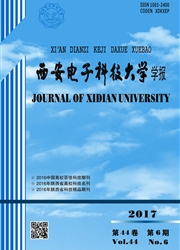

 中文摘要:
中文摘要:
为了解决干涉合成孔径雷达(InSAR)相位被缠绕的问题,本文提出了一种基于枝切法与曲面拟合的合成相位展开算法。这种算法针对干涉相位图中不同质量的区域采用不同的展开策略,首先利用枝切法准确性高的特点展开高质量区域的相位,然后利用曲面拟合的方法对低质量区域的相位进行拟合,最后利用遗传算法对拟合函数进行修正来获得最终的展开相位。通过仿真实验和实测数据的验证,该方法很好的克服了枝切法的“孤岛现象”的发生和最小二乘法存在相位坡度欠估计的情况,且较其它方法有着更高的精度。
 英文摘要:
英文摘要:
A hybrid phase unwrapping algorithm that combines the branch-cut algorithm and surface-fitting method is proposed to slove the problem of phase wrapping in the Interferometrie synthetic aperture radar (InSAR). The algorithm applies different methods in different quality regions to unwrap the phase. It first uses the branch-cut algorithm to unwrap the phases in high quality regions for the benefit of high accuracy, then uses the surface-fitting method to fit the phases in low quality regions and finally, optimizes the coefficients of the surface-fitting function using the gene algorithm to obtain the unwrapped phase. Both simulated and experimental results have shown that the new algorithm can avoid the " isolated island phenomenon" of the branch-cut algorithm and the phase gradient error of the least-mean-square algorithm. The proposed hybrid algorithm is more precise than other methods.
 同期刊论文项目
同期刊论文项目
 同项目期刊论文
同项目期刊论文
 期刊信息
期刊信息
